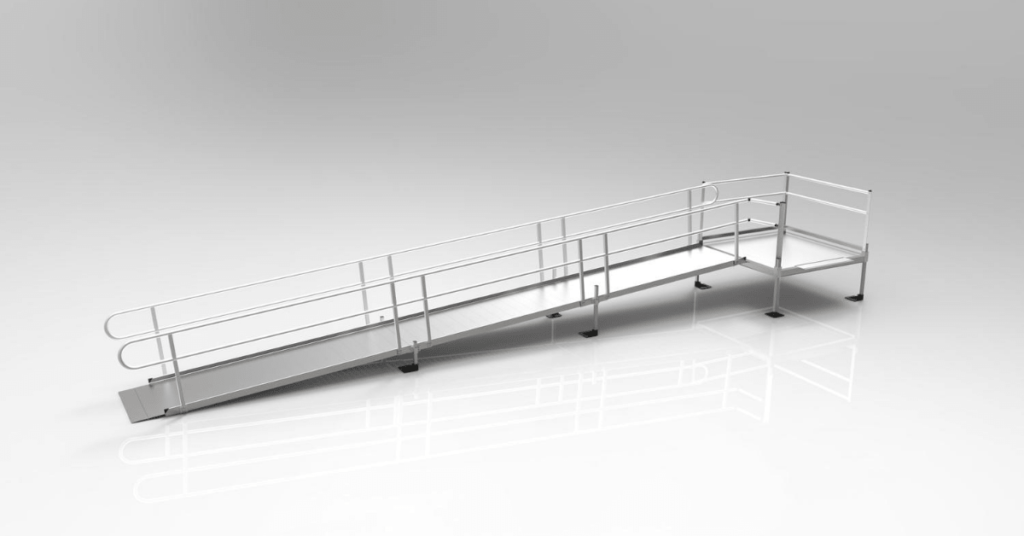The calculator below can be a good place to start. Tell us how many steps you have leading to your home for a quick estimate.
So now you have a quick estimate, but let’s take a deeper dive into how we calculate the cost of a wheelchair ramp. For the sake of this article, let’s pretend you are an evaluator from COR Freedom. How will you figure out the cost of a ramp?
1. Measure the distance from the ground to the threshold of the door.
The number of inches of rise equals the minimum length of ramp in feet. In other words, if the threshold is 24 inches above the ground, you will need a minimum of 24 feet of ramp. The ADA calls this the 1:12 rule (1 inch of rise = 12 inches of ramp).
NOTE: Sometimes this measurement can be misleading if the end of the ramp needs to land on ground that is much lower than the ground near the home. In other words, it’s possible for the ground you measured beside your porch to be quite a bit higher than the ground where the ramp will end. If that’s the case, you’ll likely need more ramp than what the above calculator shows.
This is why it’s always a good idea to have a professional evaluate your home to help you determine exactly how much ramp you’ll need.
2. Add 10 extra feet for platforms - 5' at the top and 5' at the bottom.
You need a platform at the top for a flat surface to stop on when opening and closing the door. the bottom platform serves as a landing for the end of the ramp.
Sometimes it’s a simple as that. Factor in the taxes and labor charges, and you’re done.
But often it’s not that easy. Many times the path from the door to the driveway or sidewalk is not a straight one and requires turns. This happens for a variety of reasons.
3. Add in platforms for turns
Many times the path from the door to the driveway or sidewalk is not a straight one and requires turns. This happens for a variety of reasons.
- The yard is too small.
- For example, if you need 48′ of ramp, but the yard is only 35′ between the porch and the road, a straight ramp isn’t the best idea for obvious reasons. (Nobody likes playing in traffic.)
- Things get in the way.
- Trees, shrubs, utility poles, even the structure of the home itself. All of these are typical culprits.
If you find yourself in a situation where you need turns in the ramp, you’ll need a 5’x5′ resting platform to make the turn. Each resting platform will add 5′ to the overall length of the ramp as well as additional material cost.
Another factor that can increase the cost is if the ramp is more than 30′ long. The ADA requires a resting platform after every 30′. Add 5′ for every resting platform.
4. Calculate labor charges based on the number of sections of ramp.
5. Add sales tax.
The Takeaway
Put your ramp in the hands of a professional. Our technicians will ensure your ramp layout is safe and customized to your home at the lowest possible cost.
